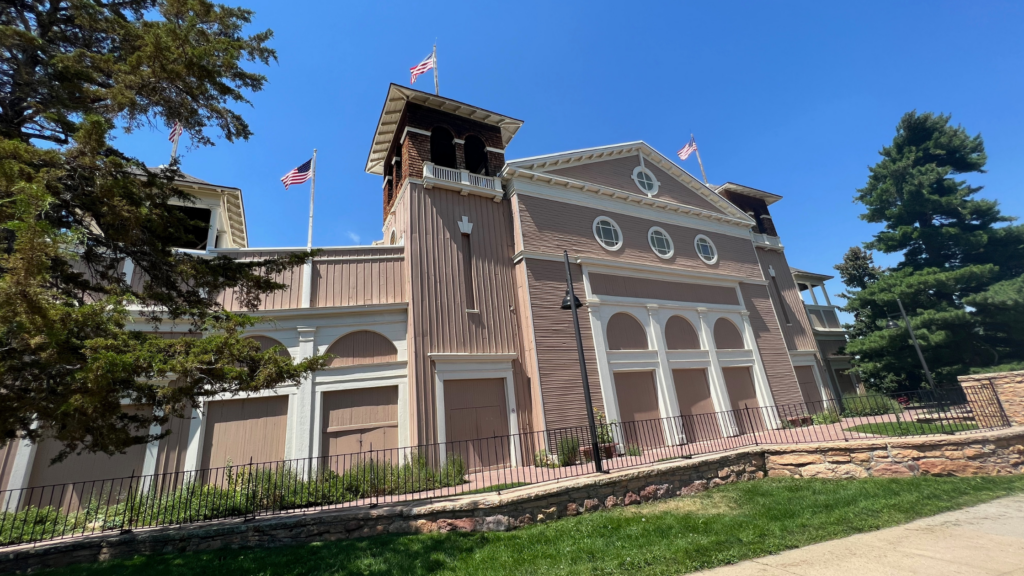Honoring Family Caregivers: Real Estate Solutions for Every Stage of Life
November is National Family Caregivers Month—a time to recognize the invaluable contributions of those who care for their loved ones. Caregiving often includes helping aging parents or family members make major decisions, including real estate choices that can profoundly impact their quality of life. Whether they’re ready to downsize, looking to fund a move to a retirement community, or considering a multigenerational home setup, understanding these options can bring peace of mind to everyone involved. At John Farley Real Estate, we’re here to support caregivers in finding the best path forward for their families, blending care, comfort, and financial stability.
Helping Seniors Transition with Ease
Many family caregivers find themselves managing transitions on behalf of their loved ones, such as moving from a family home to a more manageable property. This process can be emotional, and it involves carefully considering both practical and personal factors.
- Downsizing to Simplify
Downsizing can be a smart move for seniors who want to reduce the burden of home maintenance. Smaller properties or retirement communities often offer the convenience of fewer repairs and reduced expenses. For caregivers, this means less stress over upkeep and peace of mind knowing their loved one is in a safer, more suitable space. - Selling to Fund Retirement and Care Needs
Selling a larger home not only provides funds for assisted living or specialized care but can also free up resources to support other aspects of retirement, like travel or wellness activities. As property values rise, many families find that selling allows them to comfortably finance a loved one’s care or even improve their own financial situation as caregivers. - Finding a Supportive Environment
Some properties and neighborhoods are better suited to senior living than others. Our team at John Farley Real Estate can help identify homes near essential services, medical facilities, and social communities, helping caregivers and their loved ones feel well-connected and supported.

Why Real Estate Choices Matter for Caregivers
The right real estate decision can significantly ease the caregiving journey. A well-chosen home setup allows for a safer environment, fewer daily demands, and more independence for loved ones.
- Creating Safety and Accessibility
Accessibility features like single-level layouts, wide hallways, or low-entry showers can reduce the risk of falls and make it easier for seniors to navigate their homes. For caregivers, knowing that the property is safe and adapted to their loved one’s needs provides tremendous peace of mind. - Reducing Maintenance for Less Stress
Properties with manageable yards or community services that handle exterior upkeep can lessen the burden on caregivers. These options free up time and energy, allowing caregivers to focus on more meaningful moments and providing care without the added pressure of home maintenance. - Fostering Social Connections
Choosing a home near parks, community centers, or senior clubs can encourage social interactions, which are vital for mental health. Caregivers often find that a well-connected environment helps reduce feelings of isolation for their loved ones, promoting a better quality of life.
The Benefits of Downsizing or Selling to Fund New Options
Downsizing is a major decision but can offer significant benefits for both the caregiver and their loved one.
- Financial Flexibility
Selling a family home can provide immediate financial resources for care or lifestyle changes. This might mean moving to a home with no mortgage, investing in professional care, or simply giving caregivers the ability to adjust their own finances to better support their loved ones. - Less Space, More Comfort
For many seniors, less space means more comfort. Smaller homes or apartments are often easier to manage, reducing the physical demands of daily living. Downsizing can help seniors and their families feel less overwhelmed by the demands of upkeep. - A Fresh Start
Downsizing offers a chance to start anew, simplifying life and creating a comfortable environment that fits current needs. Many families report that transitioning to a smaller home or a senior-focused community brings relief and renewed happiness to both the caregiver and the care recipient.
Investing in a Multigenerational Home
For some families, staying together under one roof provides the perfect balance of independence and support. Multigenerational homes have become a popular choice, allowing older family members to maintain privacy while staying close to loved ones.
- Enhanced Family Bonding
Multigenerational homes foster close family ties, making it easier to share daily responsibilities, celebrate special moments, and provide hands-on support. These properties can offer separate living quarters, such as in-law suites, that give each generation space while enabling a connected lifestyle. - Cost Efficiency
Living together can reduce expenses for the whole family, as sharing a single property means fewer costs related to utilities, groceries, and travel. Many families find that multigenerational living is a financially savvy choice that allows them to pool resources and enjoy a comfortable lifestyle. - Future-Proofing
Homes designed for multigenerational living are often adaptable for various needs, making them a flexible solution. From aging in place to creating a safe environment for young children, these homes serve the entire family’s needs and can grow along with each member.
Resources for Caregivers Navigating Real Estate Transitions
Navigating real estate decisions as a caregiver can feel overwhelming, but you’re not alone. Our team at John Farley Real Estate is here to offer expertise and compassion every step of the way. We understand the complexities involved and can guide you through options that fit your family’s unique needs.
- Community Connections and Resources
Our network includes contacts in the senior living, healthcare, and support sectors, making it easier for caregivers to find the right resources and referrals. Whether it’s locating nearby medical facilities or senior-friendly activities, we’re here to support the full caregiving journey. - Personalized Real Estate Guidance
Every family’s situation is different, and we’re committed to providing personalized support. Our agents are knowledgeable about the Boulder market and are prepared to help you weigh the pros and cons of each decision, ensuring you choose the best path forward. - Ongoing Support
Real estate is only part of the equation, and we’re here for the long haul. We’re dedicated to helping families find not just a property but a place that meets the emotional, physical, and financial needs of every generation involved.
This National Family Caregivers Month, we honor the dedication and sacrifices of family caregivers everywhere. Choosing the right living environment is one way to support both the caregiver and their loved one, fostering a sense of security, independence, and joy. If you’re considering a real estate transition, we invite you to reach out to John Farley Real Estate. We’ll walk alongside you, helping you make informed choices that will support your family’s well-being for years to come.






